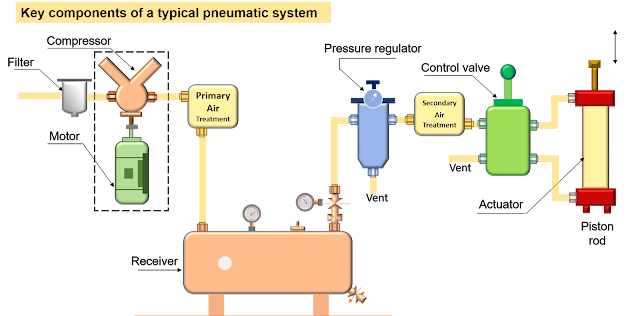Comparison of hydraulic and pneumatic systems

Comparison of hydraulic and pneumatic systems It is important to consider various points for comparing pneumatic systems with hydraulic systems such as power level, noise level, cleanliness, speed, accuracy, temperature effects, etc. Principal advantages and distinguishing characteristics of pneumatic and hydraulic systems are listed below: Availability: Air is available everywhere in unlimited quantities. Transport: Air and hydraulic fluid can be easily transported over large distances through pipelines. Storage: Compressed air can be stored in a reservoir and removed as required. Hydraulic oil can be stored in accumulators. Temperature: Compressed air is relatively sensitive to temperature fluctuations, whereas hydraulic fluids are relatively insensitive. Explosion-proof: Compressed air offers minimal risk of explosion or fire. Cleanliness: Any unlubricated air which escapes through leaking pipes or components does not cause contamination. Components: The operating compon...
